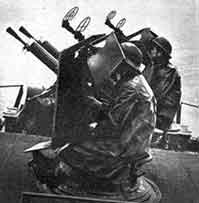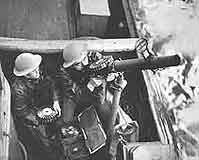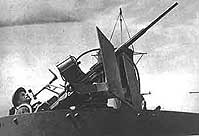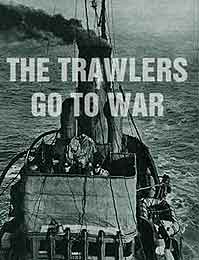
|
The Trawler, though of course not an ideal ant-submarine
craft, is exceedingly useful for that duty. The guns she can mount
are as a rule smaller than those carried by U-boats ; but on the other
hand a U-boat is far more vulnerable to damage by gun fire than any
surface craft. She cannot afford to risk her hull being holed for
that, even if it did not prove immediately fatal, would make it impossible
for her to dive and would thus deprive her of her only defence against
any more powerful men-of-war that she might encounter. It is therefore
quite impossible for even a trawler, engaging a U-boat to force her
to dive by good shooting. Once under water the U-boat is slow and,
moreover, becomes liable to attack by depth charges, which the trawler
can carry just as well as larger or faster men-of-war. Thus it is
that the trawler can provide with her 12-pounder gun forward and a
load of depth charges aft is no mean antagonist for the U-boat." "Minesweeping
of course comes almost naturally to the fishermen who man the trawlers.
The task of handling and towing the minesweepers is almost the same
thing as their ordinary occupation of handling the trawl." REAR
ADMIRAL H.G. THURSFIELD
(Naval correspondant of "THE TIMES" 1941) |
|
At the out break of war trawler production was gradually increased to meet the need for suitable AS (anti-submarrine) and minesweeping vessels. An increasing amount of mercantile trawlers were also requisitioned and fitted out for war. These included Arctic whalers and the wooden constructed drifters first used during the World War 1. The tough and enduring sea worthiness of the trawler was seen to be an ideal choice for an escort vessel. This enabled the vessel to deployed in the roughest of seas which would often even force a larger ship such as a destroyer to seek shelter. Naval trawlers were produced mostly during the course of WW2 as number of small shipyards specialised in this type of ship and their resources were idealy suited to the Admiralty. The order was given for the construction of new trawlers based on the commercial designs which could be readily modified into escorts and minesweepers. |
|
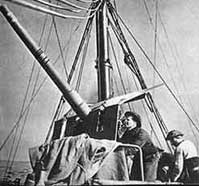
|
|
|
|
12
Pounder Gun
|
.5
Machine Guns
|
Lewis
Gun
|
|
Armament Generally to transform a trawler into a man-of-war, a considerable amount of modification had to be carried out. To carry the guns hull frames and deck beams had to be strengthened. At the front of the ship on the forecastle, and on situated on the whaleback a 12 pounder or 4 inch was mounted and aft (or rear) of the funnel a purpose built mounting was fitted to hold a Oerlikon, Bofors or a pair of five-inch machine guns. For the added protection against air attack, Lewis or Hotchkiss guns were fitted in the bridge wings. For vessels destined for A/S work depth-charge throwers and rails would also be fitted along with the necessary Asdic equipment for detecting enemy submarines.
|
||
|
|

|
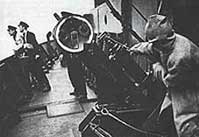
|
|
Oerlikon
AA Gun
|
Depth
Charge Rails
|
Depth
Charge Thrower
|
|
Conditions
on board a fighting trawler |
||
